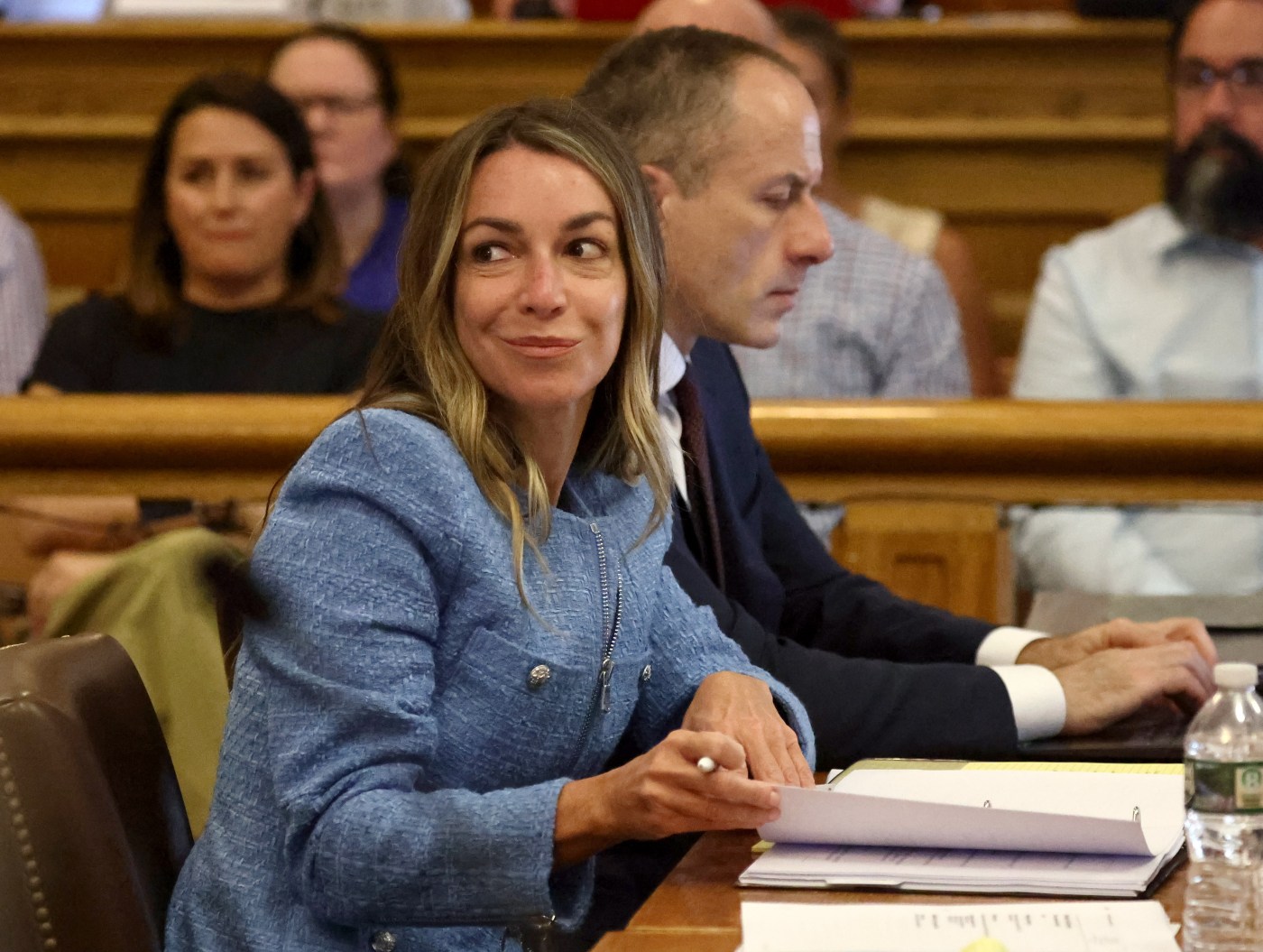
Karen Read murder trial Day 18: Witnesses focus on O’Keefe’s injuries, Read’s blood alcohol level
Just over an hour after medical personnel at Good Samaritan Medical Center pronounced John O’Keefe dead the morning of Jan. 29, 2022, Karen Read had her blood drawn, with results later revealing her blood alcohol content was well above the legal limit, and estimated by a witness to be way over at the time she took her last drink on that fateful night.
A pair of doctors and a former forensic scientist at the Massachusetts State Police Crime Lab on Tuesday zeroed in on O’Keefe’s injuries and Read’s blood alcohol level during Day 18 of testimony in the murder trial.
Medical personnel declared O’Keefe dead at 7:50 a.m, Dr. Justin Rice testified. That’s less than two hours after Read, Kerry Roberts and Jennifer McCabe found O’Keefe’s bloody body covered in snow outside of 34 Fairview Road in Canton.
Read, 44, of Mansfield, faces charges of second-degree murder, motor vehicle manslaughter and leaving the scene of a collision causing the death of O’Keefe, a 16-year Boston Police officer when he died at age 46.
Read received care at Good Samaritan Medical that morning after she was bought under a “Section 12” order for a psychiatric evaluation. Health care workers ordered her blood drawn at 9:03 a.m., Dr. Garrey Faller said on the stand Tuesday. He added that the hospital doesn’t record a patient’s blood alcohol level for legal purposes.
Faller testified that Read’s blood alcohol level was 93 milligrams per deciliter. That translates to .093 against the usual measure of grams per deciliter. The legal limit is .08. Faller highlighted how the lab tests blood for glucose, sodium, potassium and chloride levels in a patient, and whenever needed, alcohol and drugs.
Nicholas Roberts, a forensic scientist at the Massachusetts State Police Crime Lab at the time, followed Faller on the stand, testifying how he was assigned to perform what’s called a “serum conversion” on Read’s blood in May 2022.
Using medical records from Good Samaritan, Roberts said he conducted a retrograde analysis on Read’s blood sample and determined the time of her last drink at approximately 12:45 a.m. At the time, Read’s minimum blood alcohol content was between 0.135 and a maximum of 0.292, he testified.
With attorney Alan Jackson in California this week, defense attorney Elizabeth Little asked the bulk of the questions for Read’s side. First, she challenged whether Good Samaritan is in the “business of trying to calculate” blood alcohol content, and Faller responded, “No, we don’t.”
Little then took exception to Robert’s testimony, questioning the “very, very large disparity” in estimated blood alcohol range which she said is “almost a 120% swing.”
“That would be the equivalent, for example, predicting a child is going to grow somewhere from 6 feet to 14 feet,” she said.
”There’s a large range … due to the factors in the calculation,” Roberts responded.
Also on Tuesday, testimony zeroed in on O’Keefe’s injuries.
O’Keefe arrived at Good Samaritan in Brockton at around 6:47 a.m., with a core body temperature of 80.1 degrees and in cardiac arrest, Rice testified. The extreme body temperature qualified as hypothermia, and O’Keefe was unresponsive, he said.
Health care workers wrapped O’Keefe in what Rice called a “Bair Hugger” – a blanket with warm air pumped through it – while providing O’Keefe warm IV fluids to try to raise his temperature, Rice said.
“Despite resuscitative efforts for approximately half an hour, there was not a significant warming,” Rice said.
Rice also testified that O’Keefe had a cut on the ridge above his right eye, and swelling and bruising of the surrounding soft tissue. O’Keefe also had scratches on his right forearm, he said.
“In cases like this, because the attention is on resuscitation of someone’s heartbeat, their life,” Rice said, “there’s less focus on injuries or observations that don’t coincide with the resuscitation effort or are not pertinent to that resuscitation effort.”
Also on Tuesday, prosecutor Adam Lally called O’Keefe’s niece and nephew to the stand. A court order barred the media from broadcasting and reporting on the testimonies until the children finished, nearly two hours later.
O’Keefe gained custody of his sister’s son and daughter after she died from cancer and her husband died of a heart attack several months later.
The two teenagers testified how O’Keefe and Read’s relationship was “sometimes rough,” with good days mixed with bad, WBZ reported from inside the courtroom. The niece described a fight between the couple in early January 2022, with Read refusing to leave the home after O’Keefe told her to, the TV station reported.
O’Keefe’s niece also testified how Read, the morning of Jan. 29, 2022, would tell people she called that she had gotten into a fight with O’Keefe and wondered if she hit him, but in another call later, she mentioned no fight but maybe a plow hit him.
“I had never seen her like that. Frantic. Pacing around,” the girl said, per WBZ.
The decision to call O’Keefe’s niece and nephew to the stand did not sit well with defense attorney David Yannetti.
“It was desperate and inappropriate for the DA’s office to call children to try to prove a nonexistent motive that they failed to prove through their adult witnesses,” he told reporters after exiting the courthouse Tuesday afternoon.
The trial resumes next week at Norfolk County Superior Court in Dedham.
Dr. Justin Rice testifies at the Karen Read murder Trial at Norfolk Superior Court on May 28. (Staff Photo By Stuart Cahill/Boston Herald)

